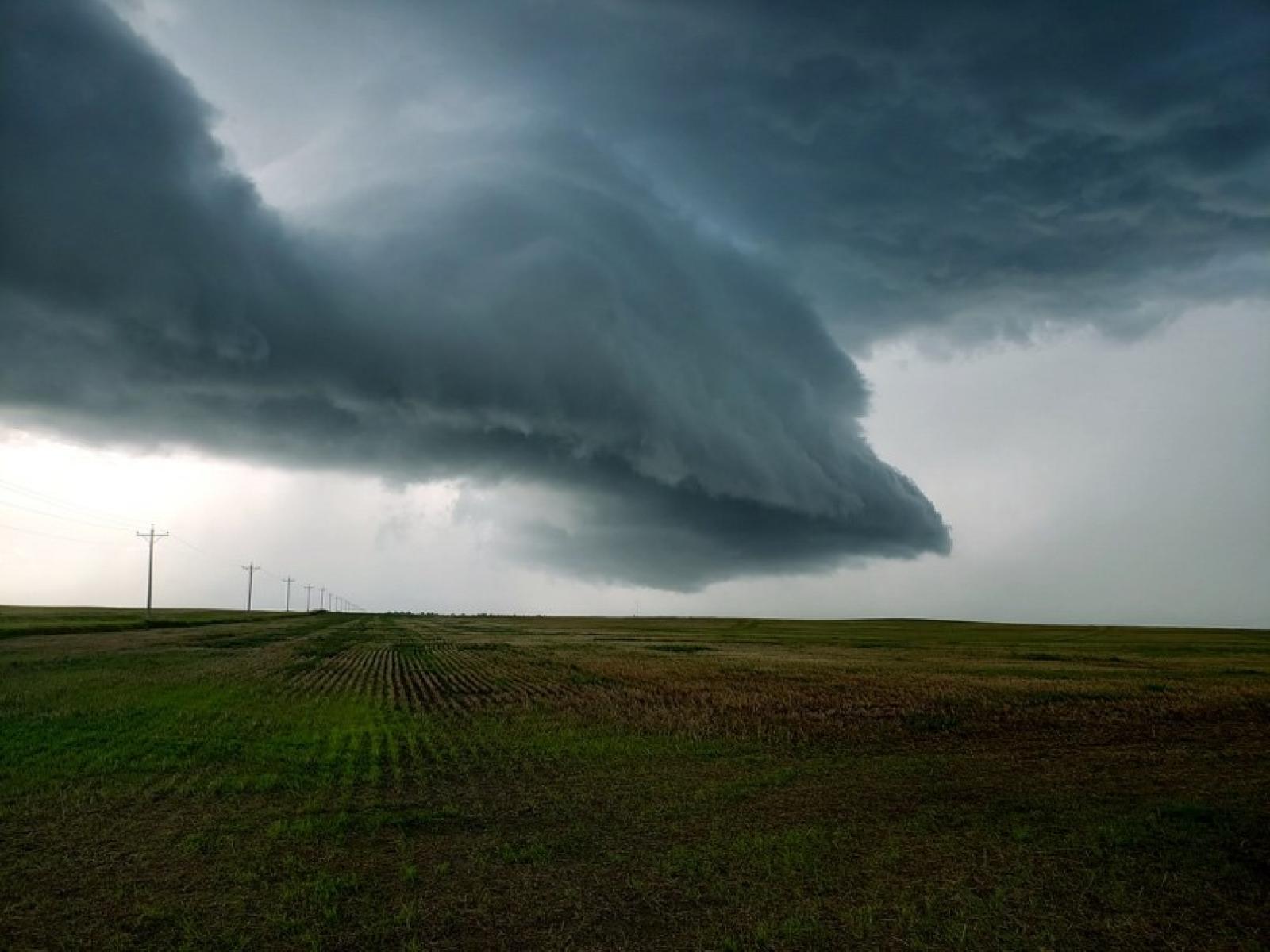Rainfall Characteristics over the Central U.S. Influence Agriculture and Flood Risk
Mesoscale convective systems produce more intense rainfall than warm-season rain in this region

Variation in rainfall intensity and frequency between mesoscale convective systems and other warm-season rainfall in the central United States could influence the region’s future agricultural productivity and flooding risk.
Photo by Bernard Schmidt on Unsplash
The Science
Mesoscale convective systems (MCS), a form of organized deep convection that produces severe weather conditions, significantly affect the central United States. As MCSs account for half of the warm-season rainfall in this region, understanding different characteristics of MCS and non-MCS rainfall, as well as their historical trends, is fundamental to exploring how these storms may change in the future. Scientists at the U.S. Department of Energy’s Pacific Northwest National Laboratory studied the rainfall characteristics of MCS and non-MCS storms east of the Rocky Mountains. They found that MCS rainfall is approximately seven times more intense than non-MCS rainfall, but it happens less frequently in time and space. They also identified opposite trends in MCS and non-MCS rainfall in the past two decades, with increased frequency and duration of MCS storms and reduced non-MCS rainfall area.
The Impact
Precipitation characteristics are intrinsically connected with the local hydrologic responses and agricultural productivity. Frequent light-to-moderate rainfall can benefit vegetation while infrequent, heavy rainfall may produce floods. The large disparities in intensity and frequency identified between MCS and non-MCS storms suggest differences in their impacts on surface hydrology and land-atmosphere interactions. Increases in heavy rainfall associated with MCSs could increase flood risk in the central U.S. and impact drought prone ecosystems in the future.
Summary
In this study, researchers applied an algorithm to hourly rainfall and radar data to detect and track MCSs. They compared rainfall intensity, area, and frequency of MCS and non-MCS storms. The team found the intensity of MCS rainfall is about seven times greater than non-MCS storms; however, it occurs less often in time and space. They also investigated the historical trends in the characteristics of MCS and non-MCS rainfall between 1997 and 2018. MCS rainfall increased during this time period due to an increase in frequency and a longer duration per MCS storm. In contrast, non-MCS rainfall decreased mainly due to a reduction in rainfall area. Altogether, the total wet days have decreased by about 12 percent in the Northern Great Plains, while dry intervals between events have become longer and more variable. The differences in rainfall characteristics have important implications for local responses of ecohydrological systems, which would be the focus of this team’s future work.
PNNL Contact
L. Ruby Leung, Pacific Northwest National Laboratory, Ruby.Leung@pnnl.gov
Funding
The U.S. Department of Energy Office of Science, Biological and Environmental Research supported this research as part of the Regional and Global Climate Modeling program area.
Published: August 31, 2020
H. Hu, L.R. Leung, and Z. Feng, “Observed Warm‐Season Characteristics of MCS and Non‐MCS rainfall and Their Recent Changes in the Central United States.” Geophysical Research Letters 47, e2019GL086783 (2020). [DOI: 10.1029/2019GL086783].